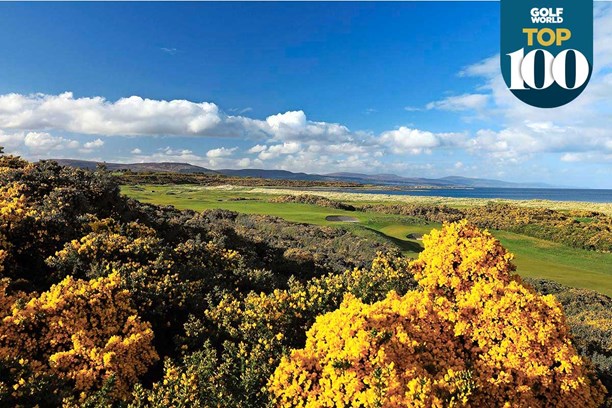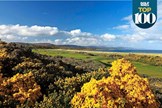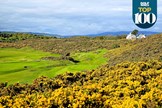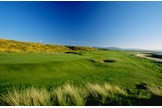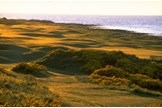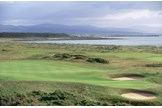Royal Dornoch Golf Club
Last updated:
What we say
Tom Watson described Royal Dornoch as “the most fun I’ve had playing golf in my entire life,” after his first round here. We find it hard to disagree. Golf World Top 100 Courses and Resorts Editor Chris Bertram explains why it is one of Britain’s best golf courses.
If you have golf running through your veins and down your fingers, it is inconceivable you will not one day find yourself in Dornoch. And when you do visit this quaint Highlands town and play its mesmerising links, it will surely ingrain the game a little deeper in your soul.
Golf World Top 100: The Best Golf Courses and Resorts
There may be courses in these isles more exacting, more visually striking or with more championship pedigree, but none match Royal Dornoch for romance. Leave this mystical outpost apathetic to its links and you will be in a minority.
More likely is the scenario that has you already plotting a rapid return to Sutherland as you crawl along ‘Golf Road’ in order to begin the journey back down the A9, for it is impossible to imagine many play Dornoch and feel there is nothing more to learn of it.
The fortunate golfer has the resource to return regularly: distinguished architects such as Tom Mackenzie; acclaimed writers such as Lorne Rubenstein and legendary players such as Tom Watson.
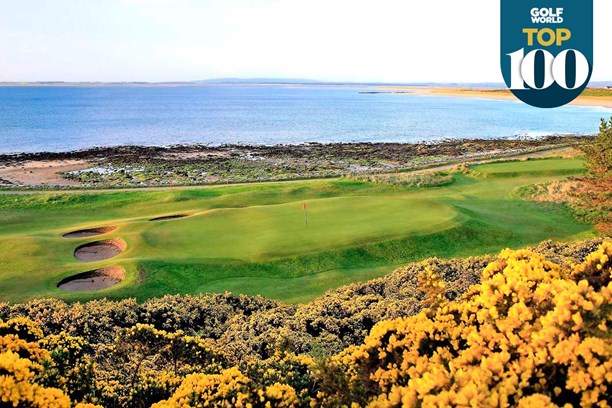
This golfer has been in Dornoch in spring, summer and late autumn, and savoured it at dawn and dusk, and in sunshine, drizzle and a gale. The conditions are always irrelevant, in a stronger sense than at any other course in Britain and Ireland. The reason may well be because there is so much going on at Dornoch, meaning the preoccupied and captivated mind is distracted from inclement weather or impending darkness.
There is history to be soaked up, views to be ingested, and dexterous shots to be played. Perhaps only Royal County Down offers as complete a package in Britain and Ireland. Certainly, few could plausibly dispute Dornoch and RCD as the finest links not to have held an Open.
RELATED: Castle Stuart course review
Dornoch is the senior club of the two by 12 years, having been founded in 1877, although golf had been played on this linksland for much longer. Indeed, 2016 marked the fourth century of golf being hosted on this unique seaside terrain.
Yet its remote location an hour north of Inverness – and thus four hours’ drive from Glasgow – meant Dornoch’s appeal had remained relatively unexplained for most of these four centuries.
Then in 1981 Watson played here on his well-documented links education with Sandy Tatum. Playing in front of sizeable local crowds, Watson enjoyed his first 18 so much he asked the caddies if they’d discreetly return at 6pm for a second. Playing his evening round in overcast, damp weather, Watson opined “this is the most fun I’ve had playing golf”. He added a third 18 the next day.
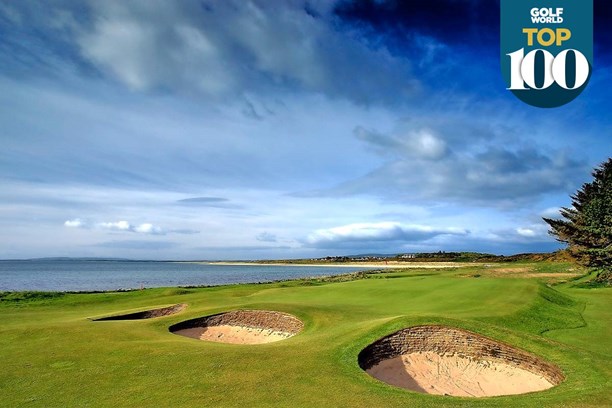
His visit followed Ben Crenshaw’s 12 months earlier ahead of the Muirfield Open. “Let me put it this way, I nearly did not come back,” said the future Major champion and celebrated designer, when asked if he had enjoyed the links.
Suddenly, Dornoch was firmly on the agenda for overseas visitors. Now there are nearly 500 overseas members and it’s a key target for big-name hunting Americans.
The well-informed had long travelled here though, no doubt intrigued by the course that had shaped the artistry and nous of Donald Ross, who was brought up yards from the 1st tee and learnt the skills that brought him fame and esteem in America on Dornoch’s links.
NEWSLETTER: Get all the Top 100 news and updates direct to your inbox
Fabled American writer Herbert Warren Wind was one of the earlier travellers, writing in the ‘New Yorker’: “It is the most natural course in the world. We in America are just beginning to appreciate no golfer has completed his education until he has played and studied at Royal Dornoch. Golf at its best.”
Wind penned that in 1967, which was, despite golf here dating back to 1616, less than 20 years after the course was finished in its current form. For while Old Tom Morris extended his initial nine holes to 18 in 1886 and Ross returned from America in 1921 to redesign the first two, today’s layout was not in place until 1948.
Four holes were used as a WW2 aerodrome so, using compensation, the final remodelling took place under the eye of 1920 Open champion George Duncan and greenkeeper Robbie Grant. Six new holes replaced the original last six, forming the 6th to 11th loop. But for Dornoch-ophile Mackenzie’s revision to the 3rd and later the 7th it exists as it was finished then.
RELATED: Machrihanish Dunes course review
Dornoch had long since (1906) gained its regal prefix, status that actually feels in discord to the down-to-earth nature of the club and town. It might be a cathedral town, but Dornoch and its people are decidedly unpretentious. The town, thus, has an appealing atmosphere – a less commercial St Andrews, a less obviously affluent Gullane – that augments the visitor’s experience. It oozes golf as it has for 400 years, and while a less romantic notion, it is true to say its prosperity is now closely linked to visiting golfers.
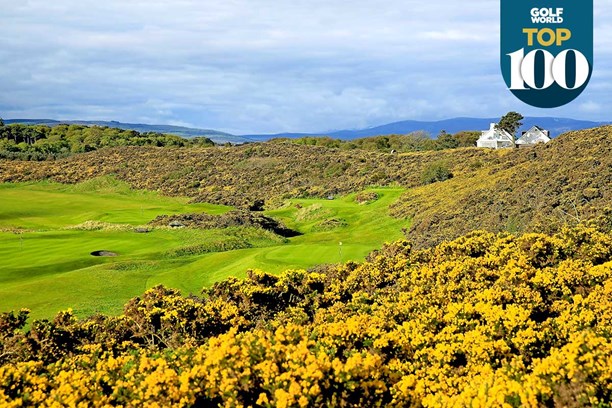
The links itself, too, has a seductive atmosphere. Perhaps it is the glorious isolation and the attendant ‘pilgrimage’ factor. It might just as easily be the sense of history, or the epic landscape. It may be a blend of all, and more, but playing here just feels right; an innocent pleasure. To those who have not been, this will seem whimsical nonsense. To some who have been, it might strike a chord.
Dornoch is also distinctive, its tumbling terrain lying in split levels alongside the Dornoch Firth’s sweeping bay. While there is significant elevation change – the 8th is the escalator connecting the sections – the linksland undulates only softly, with no gigantic dune corridors. Indeed Dornoch is often forgiving off the tee, bereft of lush rough. The tighter holes are made more nervous by gorse that lines them, but even so this 6,697-yard links usually turns out to be very much a short-game exam. Green-side skills are non-negotiable for success.
RELATED: Machrihanish course review
Its plateau greens, established in the 1880s by Old Tom, remain the soul of the course. Often large in size, these inverted saucers are without lush fringes so even balls that locate the outer edge of a green are often escorted down steep slopes. One is frequently glad of finding the bunkers that menacingly reside in the banks, for that is very often an easier recovery shot.
The greens might be large but they are slick and sloping – three putts all too easily become habit – so only sagacious, well-struck chips do not skip dispiritingly and embarrassingly off the other side. It is no exaggeration to say you can arrive at Dornoch regarded as the most proficient chipper in your group but, by the time you reach the turn, start conservatively reaching for your putter when possible.
Such decline in confidence might well start on the par-3 2nd, a typical Dornoch green of steep slopes and tales of woe. Miss it (at 184 yards it’s a real possibility) and you begin the day’s short-game exams. Never impossible but, like County Down, the margin for error is minute.
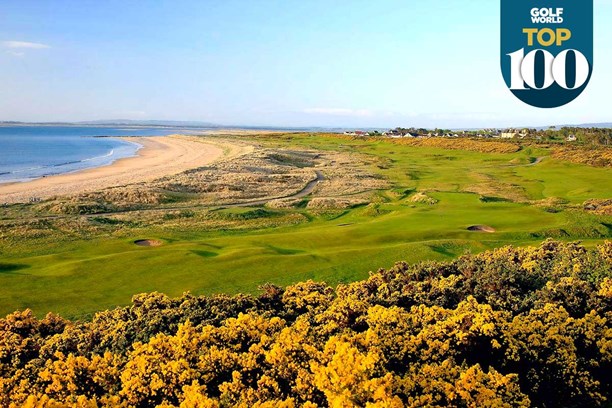
You might well make a mess of it but your mood will improve as you move through to the 3rd tee and take in the majesty of the bay. This is one of the many quietly excellent, less celebrated holes here, the drive asking you to hit a fairway that slopes towards bunkers on the right while an ocean of gorse denies an easy bail-out left.
RELATED: Nairn course review
The 5th is another, a sporty par 4 from a high tee to a well-guarded green; it’s Watson’s favourite. The strong, rippling 11th and the capricious 13th (while the mountains and Gulf Stream shelter and warm Dornoch, at 8˚ below the Arctic circle, it still gets plenty of weather) are two more. Even the more prosaic holes have appeal: the 7th – which sits on a ledge – affords a view of the links that is peerless in Britain to this golfer’s eye; the uphill 16th is a similar story.
Of its much-discussed outstanding holes, the 4th and 14th might be the best known, especially the latter. ‘Foxy’ is a bunkerless par 4 that Harry Vardon described as “one of the finest natural holes in the world”. The raised green sits at right angles to the double-dogleg fairway and if you find it in regulation on your first visit it is akin to an ace, for holding the ball on the elevated surface with (at least) a long iron is a mighty feat.
RELATED: Skibo Castle course review
You might prefer the split-level 8th, or the 9th, whose tee next to the beach begins the journey home with a par 5 of rare distinction. It is followed by another superlative short hole, a stout 176 yards with bunkers wedged into the banks around the green. You could stand there all day and search for the place to miss. And don’t forget the 17th, with its split fairway, a blind approach over a hill with a bunker in it, and a devilish bowl green.
Try to avoid being entertained there. It is as unlikely to happen as being immune to the seduction of Royal Dornoch.
READ NEXT: Golf World Top 100 Links Courses in Great Britain and Ireland
-
Course Summary
- Costs
- TG Rating
- Players Rating
- Address Royal Dornoch Golf Club, Golf Road, Dornoch
- Tel 01862 810219
- Website www.royaldornoch.com
Course Information
| Course | 70 par |
| Course Style | - |
| Green Fees | £105-£195 |
| Course Length | 6,754 yards (6,176 metres) |
| Holes | 18 |
| Difficulty | Hard 0-10 |
| Course Membership | Private |
Course Features
- Course has: Bar
- Course has: Buggy Hire
- Course does not have: Driving Range
- Course has: Practice Green
- Course has: Pro Shop
- Course has: Restaurant
- Course has: Trolley Hire
- Course has: Dress Code
- Course has: Club Hire
- Course has: Handicap
Your Reviews
-
Links Heaven
If your seeking a true Scottich golfing links experience you must play this course. It is superb and in my top 5 courses of all time. After two relatively easy opening holes the course becomes a true test of links golf. Hard running fairways, deep bunkers and raised undulating greens, whispy rough and gourse. This really is links heaven. An hour from Inverness where you can also play Castle Stuart & Nairn. Three courses you need to play. Forget the Costa Del Sol & Algarve one year. Go to the Highlands-golf as it should be.
-
Super
What can I say.....super, super,super. Absolutely fab. I can't wait to go back.
-
Epic Links
Played 18 on the Struie before tackling this fabulous course. In perfect condition. Couldn't have wished for more. Good restaurant as well. A must play course.
-
outstanding
simply put this has to be one of the best course in the world from the condition of the course to the scenery surrounding you you cant help but enjoy yourself even if you play like a donkey as i did on it
-
Go Spoil Yourself!
First played this course 3 years ago and fell head over heals for it. So I went back for more in June 09 and it was even better than I remembered. From the moment you walk into the Pro Shop to the moment you leave the 19th you are made to feel welcome, the staff treat everyone as royalty and it just adds to the whole experience. The course, is tough but fair. The par 3's will test your mid iron play and the Par 14th could test your patience! If you ever want to play a real GEM of a course then go play Royal Dornoch (twinned with Pinehurst No2).
-
Savour the opportunity.
Second time round just as awesome (non-American meaning). Greens had been worked on but certainly did not spoil anything. Miss greens at your peril as recovery from close very difficult. Margin of error minimal so tough for higher handicap player. Scenery and history second to none.
-
what a place
Simply stunning - great condition and design - all you could ever ask for
-
what a place
Simply stunning - great condition and design - all you could ever ask for
-
Best links ever...
The best Links I have ever played. Peaceful surroundings with magnificent scenery with Scottish hills as a backdrop and the seashore so close. The course has some excellent testing holes with fabulous greens.
-
Best golf ever
An outstanding course also where you can sense the history of golf. Highly recommended.
